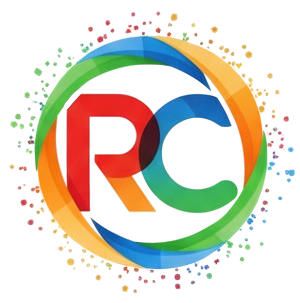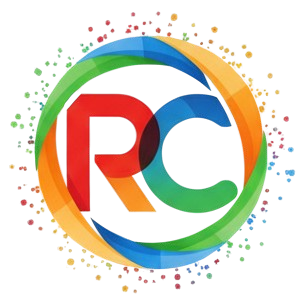Future Outlook of the Automated Suturing Devices Market

Market Overview
According to the research report published by Polaris Market Research, the Global Automated Suturing Devices Market Size Is Expected To Reach USD 1,081.7 Million By 2030., at a CAGR of 6.3% during the forecast period.
The Automated Suturing Devices Market is experiencing significant growth driven by advancements in surgical technologies and the increasing demand for minimally invasive procedures. Automated suturing systems have emerged as an essential tool in modern operating rooms, offering precision, efficiency, and consistency compared to traditional manual suturing methods. The market is gaining traction due to rising surgical volumes worldwide, growing healthcare infrastructure, and the ongoing shift toward automation in surgical practices.
Automated suturing devices are increasingly adopted across various surgical specialties such as cardiovascular, orthopedic, gastrointestinal, and gynecological surgeries. These devices are designed to improve procedural accuracy, reduce operation time, and enhance patient recovery outcomes. The growing emphasis on patient safety and cost-effective healthcare delivery continues to fuel the demand for advanced surgical solutions, thereby supporting the expansion of the automated suturing devices market.
What is the Automated Suturing Devices Market?
The Automated Suturing Devices Market refers to the global industry focused on the design, development, production, and commercialization of suturing systems that automate the process of stitching tissues during surgical procedures. These devices can be either disposable or reusable and are available in both hand-held and powered variants.
Automated suturing devices help surgeons perform consistent, secure sutures with minimal human error, particularly in complex or minimally invasive surgeries. They are engineered to improve workflow efficiency in the operating room while minimizing complications associated with manual suturing, such as inconsistent tension and needle handling risks.
The market encompasses a range of technologies including robotic-assisted suturing systems, endoscopic suturing devices, and automated needle drivers. As healthcare systems worldwide focus on optimizing surgical outcomes and reducing procedure times, the adoption of automated suturing devices continues to expand across hospitals, ambulatory surgical centers, and specialty clinics.
𝐄𝐱𝐩𝐥𝐨𝐫𝐞 𝐓𝐡𝐞 𝐂𝐨𝐦𝐩𝐥𝐞𝐭𝐞 𝐂𝐨𝐦𝐩𝐫𝐞𝐡𝐞𝐧𝐬𝐢𝐯𝐞 𝐑𝐞𝐩𝐨𝐫𝐭 𝐇𝐞𝐫𝐞:
https://www.polarismarketresearch.com/industry-analysis/automated-suturing-devices-market
Key Market Growth Drivers
-
Rising Demand for Minimally Invasive Surgeries
The global preference for minimally invasive surgical procedures is a major driver of the automated suturing devices market. Patients and healthcare providers alike favor these techniques due to their reduced recovery times, lower risk of infection, and shorter hospital stays. Automated suturing devices play a crucial role in such procedures by enabling efficient and precise tissue closure within confined surgical fields. -
Technological Advancements in Surgical Devices
Continuous innovations, including robotic-assisted suturing systems and endoscopic suturing devices, are propelling market growth. Manufacturers are integrating features such as ergonomic designs, enhanced needle control, and real-time imaging compatibility to enhance the accuracy and safety of suturing processes. -
Increasing Surgical Volumes Worldwide
The global rise in surgical procedures—driven by the growing prevalence of chronic diseases, aging populations, and trauma cases—has boosted the demand for efficient suturing technologies. Automated suturing devices help address the growing surgical workload by improving the speed and precision of operations. -
Emphasis on Reducing Surgical Complications
Automated suturing reduces the likelihood of errors associated with manual suturing, such as inconsistent stitch placement or needle injuries. Hospitals are increasingly adopting these devices to ensure standardization, improve patient safety, and meet stringent healthcare regulations. -
Growing Adoption in Ambulatory Surgical Centers (ASCs)
Ambulatory surgical centers are witnessing a surge in adoption of automated suturing systems due to their focus on outpatient surgeries and cost-effectiveness. These facilities prefer automated devices that ensure efficiency, reduce procedure duration, and enhance patient turnaround time.
Market Challenges
-
High Initial Costs of Automated Systems
-
The substantial capital investment required for advanced suturing devices limits adoption among smaller hospitals and clinics.
-
Cost-sensitive healthcare markets in developing regions often prefer manual alternatives, hindering widespread deployment.
-
-
Training and Skill Requirements
-
Effective use of automated suturing devices requires specialized training for surgeons and operating room staff.
-
The learning curve associated with robotic or powered systems can delay adoption, especially in resource-limited settings.
-
-
Limited Accessibility in Low-Income Regions
-
Lack of infrastructure and limited healthcare budgets restrict access to advanced surgical technologies in developing countries.
-
This creates disparities in the adoption rate between developed and emerging economies.
-
-
Device Malfunctions and Maintenance Issues
-
Mechanical or technical failures during surgery can pose risks to patients and delay procedures.
-
Regular maintenance and calibration requirements increase operational costs for healthcare facilities.
-
-
Regulatory and Compliance Challenges
-
Stringent regulatory approval processes for new surgical technologies can slow down product launches.
-
Manufacturers face complex compliance requirements to meet international safety and quality standards.
-
Market Opportunities
-
Integration of Robotics and Artificial Intelligence
-
The incorporation of AI-driven technologies and robotic systems in automated suturing devices presents vast opportunities for innovation.
-
Intelligent suturing platforms can enhance precision, automate decision-making, and optimize tissue closure outcomes.
-
-
Expansion in Emerging Economies
-
Rapid growth in healthcare infrastructure in Asia-Pacific, Latin America, and the Middle East offers significant market potential.
-
Government initiatives to modernize surgical facilities are likely to support the adoption of automated suturing systems.
-
-
Increasing Focus on Outpatient and Ambulatory Surgeries
-
With a rising preference for same-day surgical procedures, demand for compact, portable, and efficient suturing devices is growing.
-
This shift supports product development targeting faster, less invasive, and more cost-effective surgical solutions.
-
-
Growing Investment in Healthcare Automation
-
Hospitals and healthcare providers are investing in automated solutions to enhance efficiency and reduce manual errors.
-
The transition toward smart operating rooms creates an enabling environment for advanced suturing devices.
-
-
Product Innovations and Customization
-
Continuous R&D efforts are leading to the development of customizable suturing devices tailored to specific surgical applications.
-
Innovations such as ergonomic designs, single-use models, and multifunctional systems can cater to diverse clinical needs.
-
-
Rising Awareness of Surgical Efficiency and Safety
-
Increasing awareness among surgeons regarding the benefits of automation in improving surgical precision is driving adoption.
-
Educational programs and training workshops by manufacturers are further accelerating market acceptance.
-
Key companies driving growth in the global Market include:
- Apollo Endosurgery
- BD
- Boston Scientific
- EndoEvolution
- LSI Solutions Inc.
- Medtronic
- Smith & Nephew
- Sutrue.
Conclusion
The Automated Suturing Devices Market is growing rapidly due to the increasing adoption of minimally invasive surgeries and the rising focus on surgical precision. These devices offer faster wound closure, reduced infection risk, and improved consistency compared to manual suturing. The growing number of laparoscopic and robotic surgeries is further accelerating demand. Hospitals and ambulatory surgical centers are key adopters, driven by efficiency and patient safety needs. Technological advancements and ergonomic designs are enhancing usability and reliability. As healthcare facilities emphasize cost-effective surgical solutions, the Automated Suturing Devices Market is expected to experience sustained global growth.
More Trending Latest Reports By Polaris Market Research:
Arc-based Plasma Lighting Market
Healthcare Cybersecurity Market





